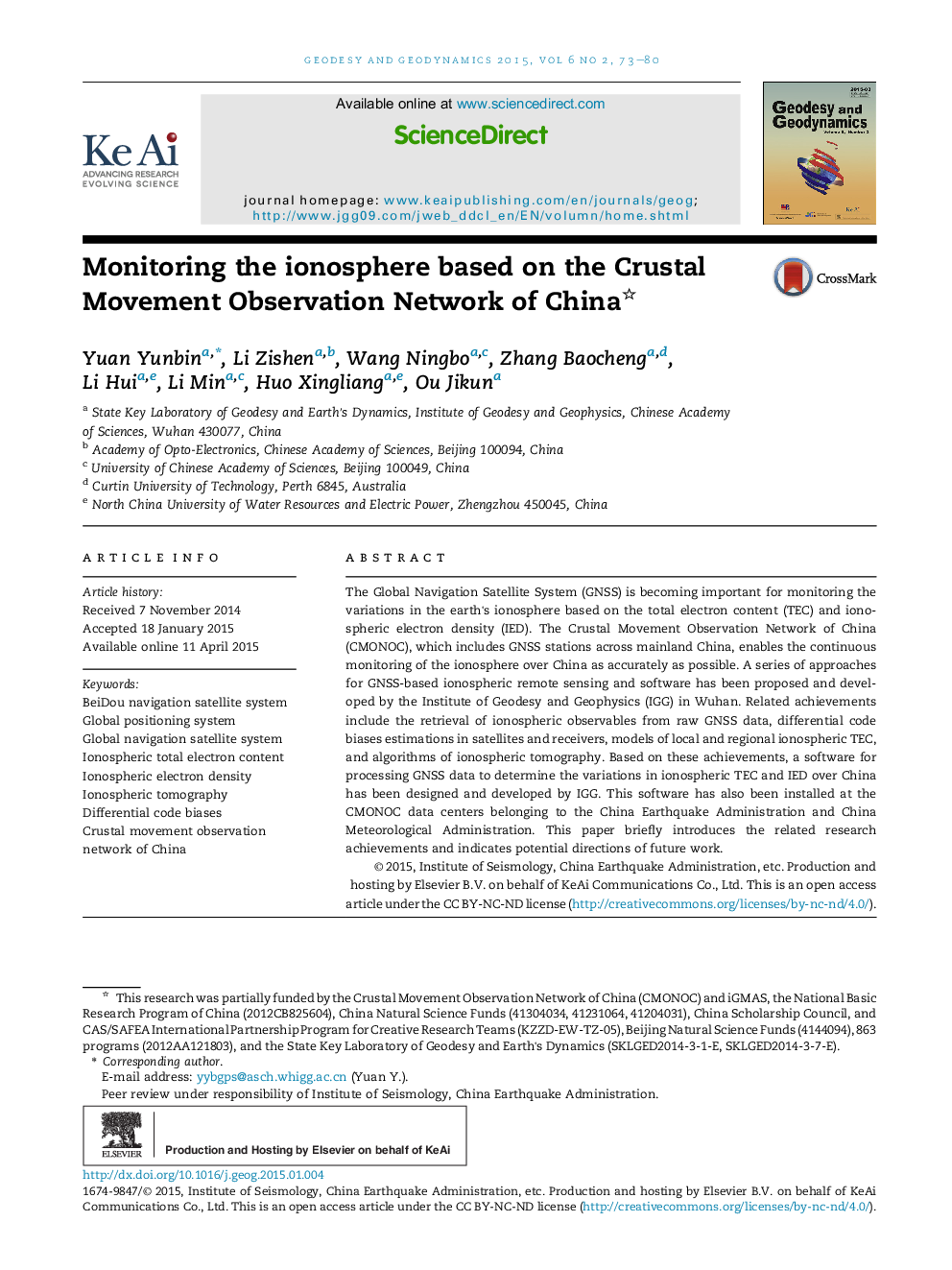| Article ID | Journal | Published Year | Pages | File Type |
|---|---|---|---|---|
| 4683499 | Geodesy and Geodynamics | 2015 | 8 Pages |
The Global Navigation Satellite System (GNSS) is becoming important for monitoring the variations in the earth's ionosphere based on the total electron content (TEC) and ionospheric electron density (IED). The Crustal Movement Observation Network of China (CMONOC), which includes GNSS stations across mainland China, enables the continuous monitoring of the ionosphere over China as accurately as possible. A series of approaches for GNSS-based ionospheric remote sensing and software has been proposed and developed by the Institute of Geodesy and Geophysics (IGG) in Wuhan. Related achievements include the retrieval of ionospheric observables from raw GNSS data, differential code biases estimations in satellites and receivers, models of local and regional ionospheric TEC, and algorithms of ionospheric tomography. Based on these achievements, a software for processing GNSS data to determine the variations in ionospheric TEC and IED over China has been designed and developed by IGG. This software has also been installed at the CMONOC data centers belonging to the China Earthquake Administration and China Meteorological Administration. This paper briefly introduces the related research achievements and indicates potential directions of future work.
